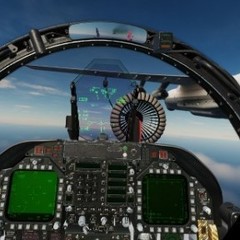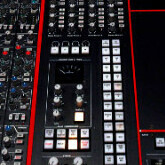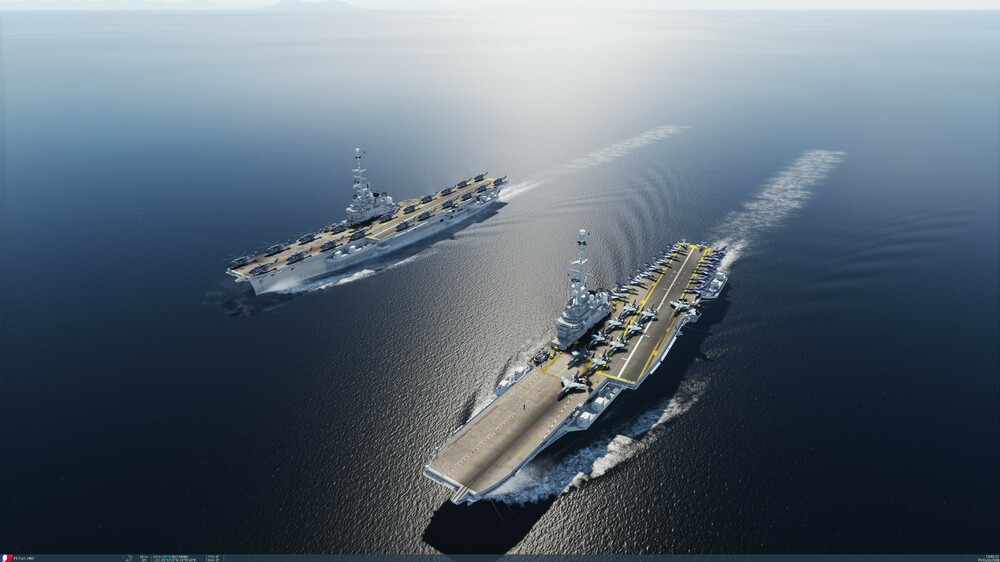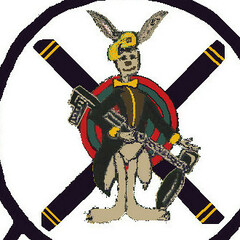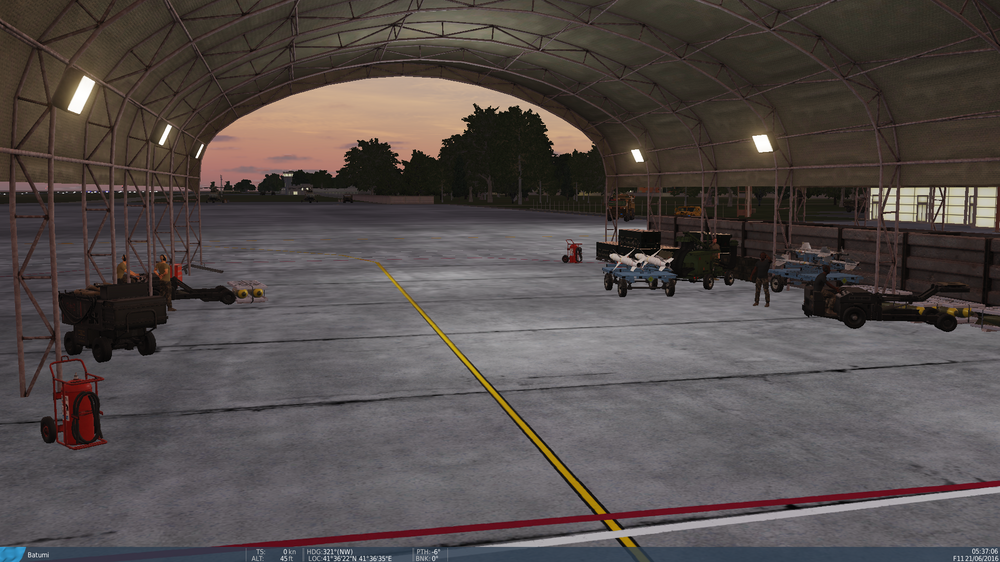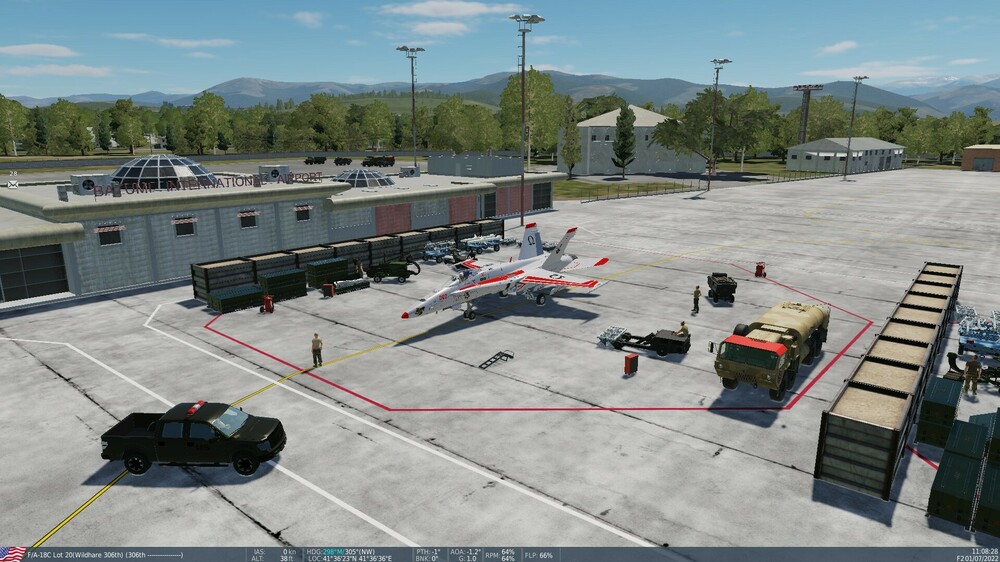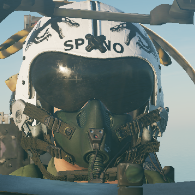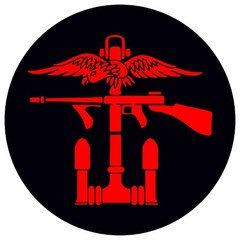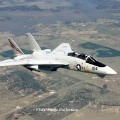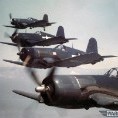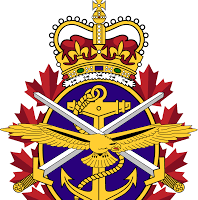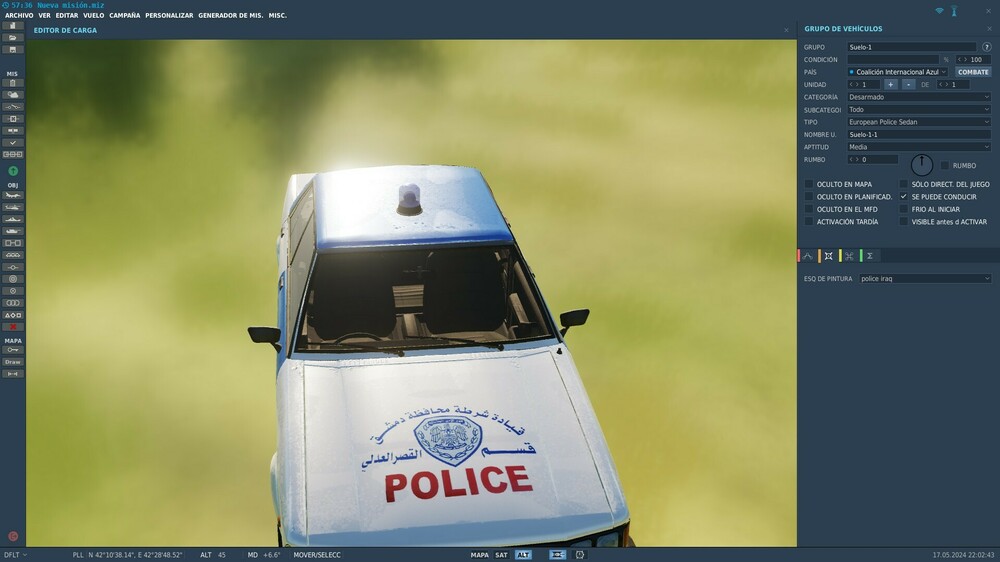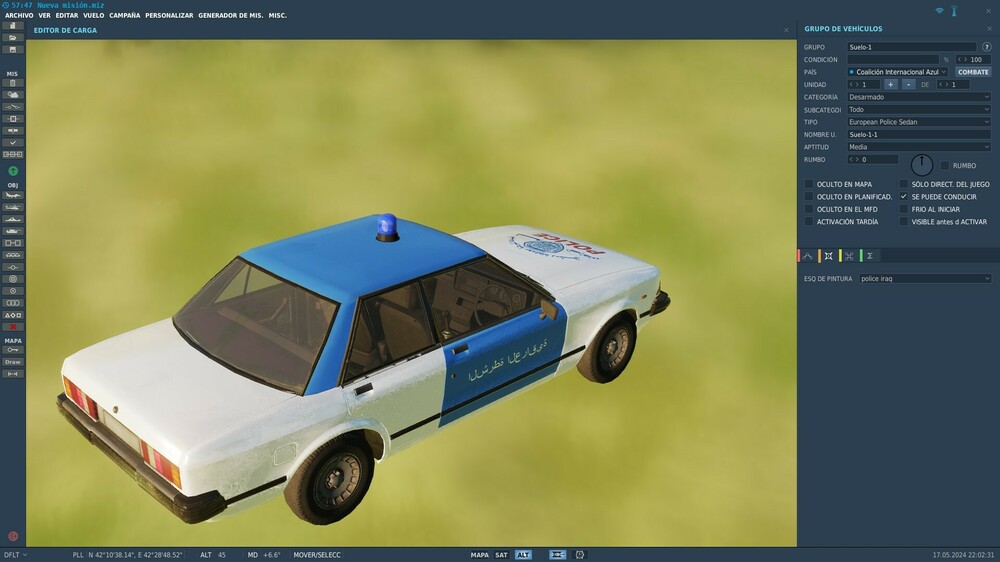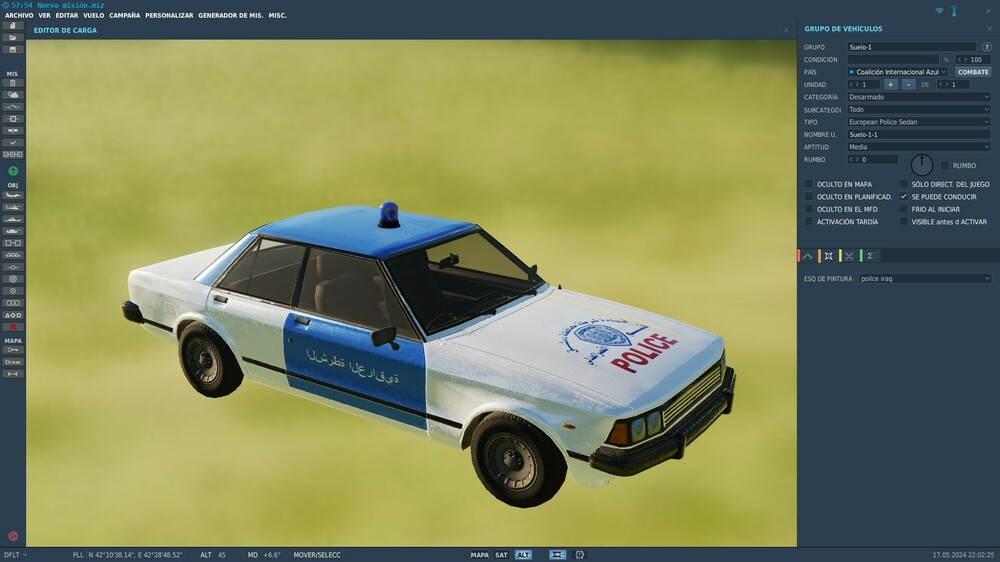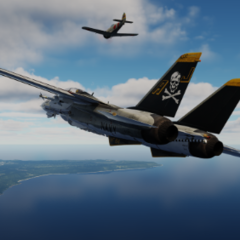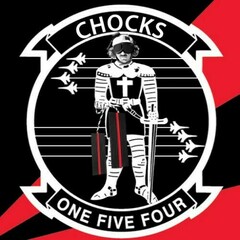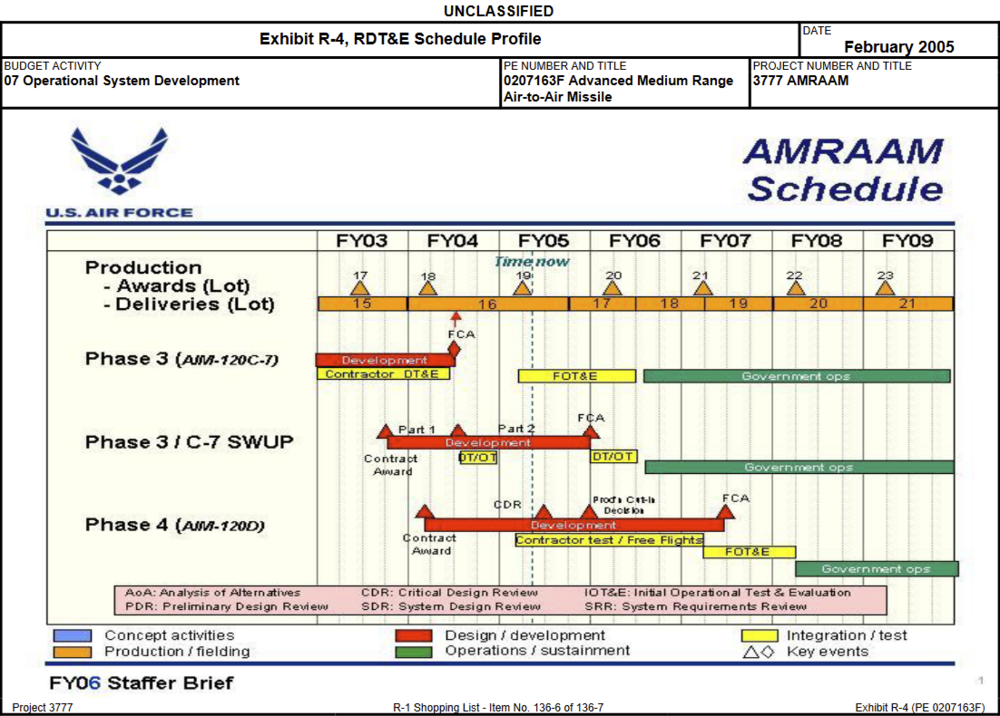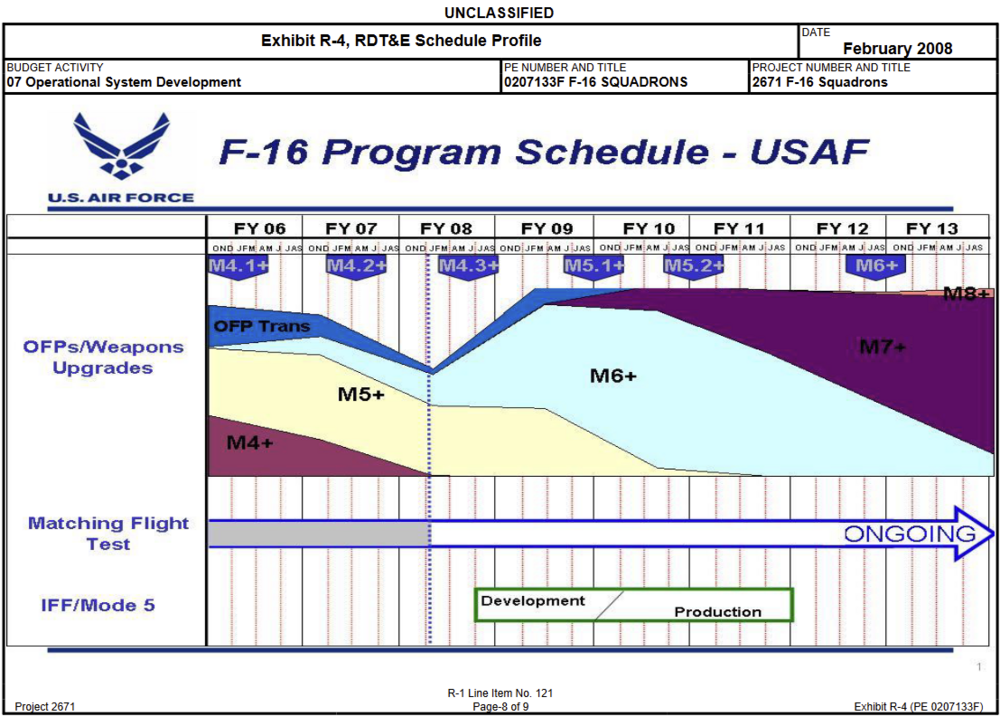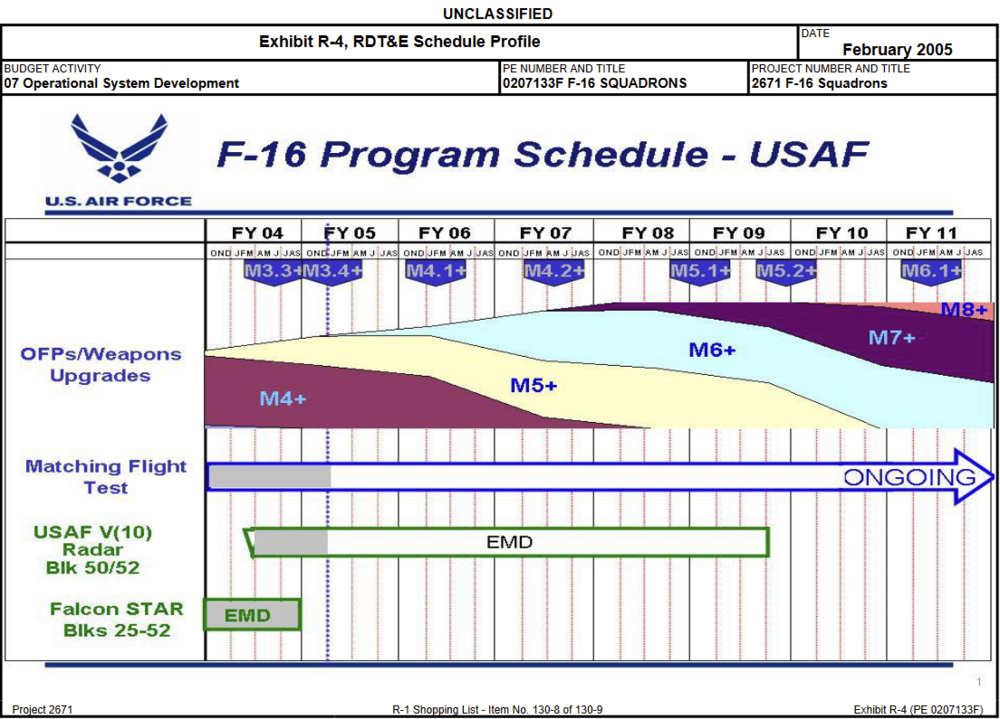Leaderboard
Popular Content
Showing content with the highest reputation on 05/19/24 in all areas
-
6 points
-
Thanks, McFly29, Oh, I know when to quit. The 3d models and DCS aren't going anywhere. At the moment I work at my own pace. No Stress. Thanks for looking out for my well-being. With regard to the Type42. I know of someone that's creating the Type42. Not sure if they will release it or not. I reached out to them and asked about it. One reason why I don't bother creating it. Nice, find Hawkeye. Perfect timing to release the mods. Eddie, after creating the Ferry mod. I said to myself it would be nice to go for a cruise on one of them. At some point I will have to take the family out on a cruise. Great job on the Liveries. That's why they call you the livery king. I have another Ferry that would be great for DCS if we could drive vehicles on and off of it. Waiting for the coding on that. That feature will change the way we operate in DCS. Speaking of Landings. Here's another great video for you all to watch. Listen to the power of the LCAC. Becoming an LCAC operator in the USN is challenging but can be done.5 points
-
Just to add to the chorus of congratualtions and appreciation for @Massun92's work and to request ED explore more or the same especially when is comes to stuff for the Supercarrier.5 points
-
Having seen in some prerelease footage, that the F-4E will come with a Iranian livery as well, there should be a corresponding KC-135 for Iran. But there is no Iranian KC-135 in DCS, only a Iranian KC-135MPRS, and both lack Iranian liveries. This should be a easy one to fix. 1) Add IRN to the KC-135 config file 2.) Grab a free IRIAF and a IIAF livery and add it to DCS, or ask @sadjad-vosoul to provide one of his great liveries. This shouldn't be much of a big deal, but would improve DCS authenticity a lot.4 points
-
4 points
-
See, IronMike, is a tribute to the Top Gun Jester. It comes from Micheal Ironside. But we never said that JESTER, is a tribute to Top Gun. Even though it is fair enough to assume that.4 points
-
4 points
-
Good Afternoon Everyone. With the assistance of CrazyEddie. We bring you all a Hurtigruten Class Cruise Ship Arcturus. I think they're mainly river cruise ships. Hurtigruten Class Cruise line is a Norwegian public coastal route transporting passengers that travel locally, regionally, and between the ports of call, and also cargo between ports north of Tromso. The mod comes with 10 Liveries with unique names and texture colors created by CrazyEddie. It was a short-notice mod creation that Eddie and I collaborated on. Enjoy.4 points
-
Surviving FAM-1 in the Phantom. Congratulations on your purchase of the F-4E Phantom II. It is a sweet flying beast, with enormous depth and versatility. It’s easy to fly while being tactically challenging. The aircraft is versatile, and the era it dominated was interesting, a combination that produces hours upon hours of engaging fun. First, don’t be intimidated by the hulking beast. The surprising little secret is that it’s easy to fly. The Phantom is honest and uncomplicated procedurally, the engines are responsive and powerful, and the slats make it feel responsive, but also stable and precise. You point it where you want to go, push the throttles up and man, does it go! As you would expect, Heatblur has delved deep into accurate modeling of systems and aerodynamics, and the result is a nuanced, detailed simulation of the F-4E. You will discover small details as you explore the aircraft and systems, they’ve even simulated the influence of engine exhaust flow on the stabilator due to its anhedral. How cool is that? From broad testing experience and SME feedback, I recommend starting with a pitch curve of at least 10 for the F-4. The simulator is faithful to the real F4E, which is sensitive in pitch. Experiment and refine your axis tuning for your controller from there. I am currently using a non-FFB stick with a 4 inch extension and heavy spring tension, 12 works for me. Map your controls. You only need pitch, roll, rudders, brakes, gear, flaps, nose wheel steering, speed brakes, trim in all axis and drag chute for this hop. Keyboard and clicking will be fine for the rest. We won’t be killing MiGs just yet. This guide is meant to be a quick and dirty “FAM-1” guide to get you in the air and safely back to earth. We’ll also have some fun in between. I know you’re eager to give it a try, so skip startup and begin on the runway, ready to launch. Fly a clean jet today, or throw on a centerline drop tank for starters. The trim will already be set (understand that due to the way the bellows/trim system interacts, until airspeed increases, the stabilator will be positioned full leading edge down on the ground), engines running, check that the flaps are down, let’s go. Normal Takeoff and Climb. Apply full afterburner, position stick full aft when Jester calls 80 knots and hold it there. Nose-wheel steering until the rudder becomes effective ~70KIAS (the NWS button must be held during operation). If you drift and need nose-wheel steering to correct, then center the rudder pedals before re-engaging. With full aft stick, the aircraft will rotate on its own when it’s ready to fly, ease off back stick to hold it at 10-12º nose up pitch attitude. Our intrepid F-4 SME’s and and recommended this technique, it works beautifully. Gear and flaps up immediately to avoid overspeed. Both have limit speeds of 250 KIAS. Min flap retract is 180 KIAS, which is only a consideration during military power takeoffs. Jester will let you know when they’re up. Terminate burner at 300 KIAS. You’re in the air, easy peasy, nothing to it. Climb at 350 to intercept .9 Mach. Mil power climbs at 350 KIAS initially require just over 20º of pitch. In Max afterburner, it will climb into the mid twenties at .9 Mach at over 30º nose high. Beast mode. Setting 3000 pph per engine results in a cruise Mach between .84 at FL 250 and .90 at FL350. That’s a fuel burn of 100 pounds per minute. Fuel planning couldn’t be simpler. Mil power at FL350 tops out just below Mach, around .97 IMN. Ease the nose down and it will go supersonic without afterburner. There is a little Mach Tuck going through transonic. Overall, the pitch changes are mild, trim is sensitive. Be quick with your thumb. Operationally, the F-4E is a Mach 2 aircraft. In level flight, it’s fastest at 35,000, and can achieve the dash one charted speed of just over Mach 2. Unload in a dive, and if you sport an adequate moustache, you can hit 2.2 plus. You can have fun figuring out the profile for that for yourself. At sea level, a low drag configuration tops out at 1.12-1.15 IMN. Adding external stores will reduce max Mach proportionately. Maneuvering Flight ROLL AUG off for maneuvering. Always roll using coordinated rudder and aileron. The higher the AOA, feed in more rudder as ailerons are less effective. Rudder only rolls are smooth and predictable. Reducing AOA increases roll rate. Experiment at different AOA’s and speeds, it will come to you quickly. Best sustained turns with typical Air to Air load outs at medium combat altitudes (SL to 15,000) range from 520-480 KIAS. Even with light pitch forces, flying a consistent, sustained turn is relatively easy. Smooth corrections pay big dividends. Control bank angle primarily with your feet. I checked the sustained turn G capability today from SL to 15,000 MSL, and it’s on the money. Gross weight affects performance of course, but if you’re doing your part, you’ll be able to hold 7.0 G on the deck, and 5.1 G while turning level at 15,000 MSL. I’m quite impressed with how stable the Phantom is at high G loads. You can already sense that the F-4E needs and loves airspeed. Use a 500 KIAS entry speed for a mil power loop, 450 with burner. A 4-5G pull up to 19.2 units will result in 200-230 knots or so over the top. It takes a lot of intentional baffoonery at very low speeds to depart controlled flight, which commonly shows up as a nose slice opposite to the direction of aileron input. The recovery controls are neutralize ailerons and rudder, unload with stick well forward (5 degrees AOA is a good target), and pull the throttles back to idle power. If the engines compressor stall, no big deal, go to idle, they recover quickly. Continue to hold up to full forward stick and let the aircraft do what it wants to do during post stall gyrations. As nose falls below horizon, and speed increases to 200 knots, you are flying again, so it’s safe to carefully roll with rudder and aileron to wings level, then pull up in light buffet, approximately 17 units, don’t exceed 19.2 units in the pullout. Spin recovery controls are rudder opposite the yaw/turn needle and lateral stick into (the primary recovery control is aileron), but perhaps the biggest shock having heard all of the lore, it is difficult to get the slatted F-4E to spin, even intentionally. That said, if the aircraft doesn’t recover, pull the drag chute. The aircraft will pitch nose down and accelerate. Either jettison the chute or let it fail when airspeed exceeds ~250knots. If you see a nose slice, it’s probably the ailerons causing it. Center the stick, reduce the angle of attack. The AJB-7 attitude indicator is so well designed that it can be used to fly precise aerobatic maneuvers, including rolling out on a specific heading, without looking outside the cockpit. The indicator is surrounded by the primary flight instruments, so in addition to the heading marks on the AJB-7 itself, you can see airspeed, AOA, altitude and the VSI in your peripheral vision, without shifting your scan. It’s all right there. Try this. Referencing the attitude indicator, pull up wings level and peg the nose exactly in the middle of the black dot that depicts 90º up, then pull the throttles to idle and do a lovely tail slide. If you get it right, the aircraft will back down, and full aft stick will make it flop forward, full forward stick will make it flop on to its back. Hold controls neutral, and it will pendulum past vertical at the bottom, where inertial dominates aerodynamics, just as a real fighter does. The AJB-7 clearly indicates where the closest horizon is to roll and pull out with minimal altitude loss. You can use it to pull out of a hairy maneuver on a specific heading, bugging out directly at home plate, where you can change out your underwear. Landing Max landing weight is 46,000 pounds. We aren’t too concerned with limitations for our hop today, but you don’t want to get into bad habits either. That’s about 12,000lbs of fuel for our configuration today, shouldn’t be a problem. At max landing weight, a stable on-speed landing AOA of 19.2 works out to 168 KIAS. If we were down to 3000 lbs of fuel using today’s configuration, on-speed would be 151 KIAS. Overhead breaks at 350-400 KIAS work well. 4000 pph will result in 400 KIAS on the run in. In this speed range, idle power in the break is fine, speed brakes are not necessary. If you do use the boards during a faster break entry, they should be manually retracted on downwind. If you are struggling to hold altitude when dirty, then you forgot to retract the speed brakes. Seat full up for landing. It’s difficult to see over the nose, so you may need to use RCTL+RSHFT+8 to raise cockpit camera. Extend gear and flaps at 250 KIAS, get the power back up as the aircraft decelerates towards 180 knots. That’s minimum speed on downwind, but slow to the “on-speed” AOA of 19.2 units (the big white square) before or during the first part of the final turn. Jester will talk you through the simple Landing Checklist. For reference, when level downwind, pitch will be 10-11º, and ballpark fuel flow with be ~4000 pph per engine. The aural tone and indexers give plenty of feedback. Gear and flap extension both cause a very mild pitch down. Flaps extend when decelerating through around 210 KIAS. Flaps will retract in the air if over-sped. Like most fighters, you’ll need to add power around the approach turn to control rate of descent. It doesn’t take much. Perform all rolling in the pattern with coordinated rudder and aileron. Trim and pitch are sensitive in the landing configuration, faithful to the aircraft, so smooth inputs are required. Fly with your fingertips. Due to the -5.25 degree thrust line of the J79 engines, adding power causes the nose to pitch down, reducing it causes a pitch up. It’s exactly opposite of the F-14. When you push with your left hand, you will need a slight pull with your right and vice versa. It’s also a happy little airplane during approach, with the AOA tone beeping and chirping. In fact, it’s quite easy to get on the runway in one piece. All of that cheerful noise should be a clue that the Phantom is flown while referencing AOA in the landing pattern. If you are struggling, try flying a little fast, with the AOA needle at the bottom of the white, “on-speed” index mark, around 17-18 units. We aren’t landing on the ship, so a little fast is fine as you get familiar, you have plenty of runway to work with. Use the “bug on the windshield” for glide path reference. Just like landing a Cessna. If you are addicted, you’ll quickly wean yourself off of HUDs. If you get behind the power curve, above 19.2 units or more, understand that excessive AOA causes enormous drag that if unchecked, will dramatically increase descent rate. To recover, forward stick to reduce AOA immediately is critical, while adding lots of power. You need both, don’t try to power out, reduce AOA with pitch. Danger of stall buffet and nose slice lurks above 25 units. In the flare, you may need to look to the left or right through the windshield side panel to see the runway, like Lindbergh did flying the Spirit of St Louis. It’s where you look when landing tail draggers or even fat nosed single engined Cessnas. Some instructors call it “The Lindbergh Reference”. I find that carrying power into the flare makes for a smoother landing. Arrest the rate of descent before you ease the power and let it settle. If you are fast, then pulling more power in the flare is fine. When you try a carrier landing, and we all know that you will, keep in mind that you will need a significantly wider abeam distance. The F-4E lacks the BLC flaps of the Navy versions, so you’ll be flying a much faster approach turn with a wider turn radius. The LSO’s will be nervously eyeing the net. Good luck. Single engine approaches are simple. Only real change is you a little faster, at 17 units, the yaw due to asymmetric thrust is easily controlled with rudder, even in burner. Fly a straight in approach using gentle bank angles and you’ll be fine. It helps to get rid of most of your fuel before landing with an engine that is “uninterested in further toil”. The F-4E also has a nifty flight director on it’s remarkable AJB-7 attitude indicator that makes ILS approaches a piece of cake. ILS freq is set on the pilot’s left console. The controls for what drives the needles are on the lower right side of the instrument panel. Give it a whirl, flight directors are amazing. After touchdown, lower the nose, pop the chute, hold the stick aft, and enjoy Jester’s compliments on your landing as you roll out. I bet that you land it on the first try. When clear of the runway, there is nothing like opening the canopies and enjoying the sound of two J-79’s while enjoying some fresh Phantom Air. Soak up the satisfaction of a flight well-flown as you taxi back to the ramp. You just experienced what it is like to fly an iconic fighter that continues to menace the skies even today. Damn, that was fun. Maybe that's why Jester loves to say, “We have the best job in the world.”3 points
-
Каждому своё. Или ты думаешь что, если каждый будет ныть об одном и тоже, что то быстрей изменится?3 points
-
Hi, I'd like to recommend Orbx to take a closer look at the bug tracker that you have, and reconsider whether not to use the forums instead. Point is, reporting of bugs, is a two-street road. While you care about your logistics and streamline in handling requests, there is also the practical customer-side. For a customer, it is not only more work to enter information into your dedicated tracker, but there is also the problem of how it works. Consider the following: On your bug-tracker, you lack a multitude of functions which these forums already have have (searching specific bugs, a clear layout on the page which is user-friendly, no form of notification linked to these forums - you have to check the tracker to keep know whether you have any comments/requests on additional information, +++). The point being, it not only becomes an additional site to keep track of, but also, somewhat less functional/intuitive one. Whilst the map is new, users will visit it, but over time, users will lose interest out of pure lack of comfort. Additionally, count in all the cases where a user believes something might be off, because it's not mentioned on forums, and ends up making double-posts. We had a firm here that tried a similar proprietary bug-tracker (Leatherneck), but one can honestly notice that it didn't go too well. Few people have the inclanation to visit it, let alone report bugs in it. A quick look at the MiG-21Bis forum, shows that people prefer to use these forums as a common, instead of a hypothetical where each and every company has their own solution, with their own website, for their own convenience. I personally, have not bothered to log in more than two bugs in Learherneck's Mantis hub since its release. Besides an occasional bug being mentioned, the huh is as dead as it gets. My point being, in initial stages of release, everything is popular. However, with time, you'll notice the interest to report bugs through it, is subpar optimal. I therefore ask you to consider to move over to these forums, as here is the place where all bugs will eventually be reported. Thanks for your a splendid map so far, and your consideration!3 points
-
Yepp, I'll talk about this in an upcoming video. During my research I found plenty of info on Topgun lessons, but almost none on the USAF Weapons School. With no resources I can't make a campaign. That's one thing. The other thing is that Navy tactics taught at Topgun were decades ahead of USAF tactics of that era. I even had an USAF SME tell me I'd better make a Topgun campaign because the USAF WS would be much more boring.3 points
-
Yes the current DCS implementation is wrong. There are references that point to that, and despite ED telling us it's correct-as-is, there is no evidence we know of that backs up their claim, so it's probably bad manual interpretation. The primary issue lays in thinking that in order to fill up a symbol, the radar needs to do identification of some sort (NCTR), which is wrong. Filling up symbols (correlation) has nothing to do with identification, it just happens when the FCR sees the same target as the Link 16 net, at the same position in the sky. Thus, it turns a hollow symbol into a filled up one, retaining the original "color" of the symbol. This would be the correct behavior. No NCTR/IFF is required. It's as simple as radar sees target -> fills up the hollow symbol (whichever color it may be). Currently in DCS, for some unknown reason, this correlation also changes the color/identity, and it requires NCTR to change the color back to the original Link 16 one. Which does not make sense, as correlation/filling does not depend on NCTR as previously established. I think they've made this confusion by mixing up correlation (filling existing symbols) and identification (change symbol color by means of NCTR), 2 different concepts in the F-16, and slapped them together to result this mix. It's a slim chance it's gonna be fixed if you ask me, we've had this report ad-nauseaum without any progress. I just turn off Link 16 in the FCR by IFF Outboard, and only use the HSD to see Link 16.3 points
-
It goes into: Saved Games\DCS.openbeta\Liveries\European Police Sedan So you wind up having: Saved Games\DCS.openbeta\Liveries\European Police Sedan\police iraq\police iraq.dds as a full path to one of the files.3 points
-
3 points
-
As it stands right now, there are functions which you cannot bind to e.g. a mouse (F-10 map, +++). I see no reason why this would be blocked to begin with. If one has a multi-button mouse, it's logical to want to put some of the "basic" functions on the mouse. I ask for a possibility to bind all bindings to any unit (possibly except axes - makes no practical sense). Thanks!3 points
-
aca el enlace del skin https://drive.google.com/file/d/1ACNAyV76NvATVGIRRuBq3h7xhR7AUtMV/view?usp=sharing avisen si hay problemas3 points
-
Not sure if anyone has asked about this or not. While "Jester" is more than fitting for the F-14 given the Tomcat's pivotal role in Top Gun, honestly it doesn't make as much sense for the USAF F-4E variant that we're getting. I wonder if Heatblur would consider re-naming the new Jester version for the F-4E to something like "Chuck" (after Chuck DeBellevue for example). It might be harder to do than I imagine, but I figured I'd suggest it. If nothing else they can think about it.2 points
-
в новостях по поводу общей модели аэродинамики (GFM) есть всего две заметки: 3 дек 2021 https://www.digitalcombatsimulator.com/ru/news/2021-12-03/ 30 июня 2023 года https://www.digitalcombatsimulator.com/ru/news/newsletters/c0a8c1b425ca8694335038102e715bcf/ Я конечно был бы рад следить за дальнейшими новостями но их больше НЕТ. А прошёл уже почти год с тех пор. То что боты умеют пользоваться триммером, это конечно очень хорошо. Но гораздо важнее чтобы боты наконец начали летать по законам физики. Сейчас такое ощущение, они чуть ли не подвешены на ниточки и ими дёргает ребёнок. И за примерами даже далеко идти не надо: Вот просто старт встроенной миссии (модов никаких нет): Специально ловить не надо, результат всегда одинаковый Или вот пример - стартуем потом даём по тормозам: Тут у бота или лунная походка Майкла Джексона или тормоза у ботов отлично держат форсаж. И всё-таки хотелось бы понять что где валяется и когда все это кончится когда будут какие то подвижки в поведении ботов и когда они начнут летать по законам военного времени физики?2 points
-
COMING SOON In this DCS video, I’ll be discussing new fuzing options coming to several DCS aircraft like the Viper, F/A-18C, and the A-10C II. The new fuzing options allow you select specific nose and tail fuzes for general purpose bombs, laser-guided bombs, INS/GPS-guided bombs, and canister munitions. The new feature also allows you to set the fuze parameters. This can be done from either the Mission Editor, Re-Arm/Refuel Window, and later the DTC payload editor in the Mission Planner for single- and multi-player. In this example, we’ll look at the new fuze option regarding the Viper. From the mission editor, we’ll select the Payload window. Let’s first look at general purpose and GPS-guided bombs and load some Mk-82s. In the top left corner of the station, click on the little triangle to edit the fuze settings. For the nose fuze, we have options for a mechanical M904 crush fuze, DSU-33 airburst fuze, or a plug with options. The arming delay determines how long it will take the bomb to arm in seconds once released from the jet and the function delay determines the delay in seconds or hours that the bomb will detonate after fuze initiation. When selecting the DSU-33, the mean airburst height in feet can be set. Tail fuze options include the FMU-152 Joint Programable Fuze (JPF) that can be programmed from the cockpit, the FMU-139 electro-mechanical fuze, the M904, and plugs. Some bombs will also have an FMU-143 tail fuze option. The 143 is designed for delayed weapon penetration tasks. It’s important to note that except for the FMU-152 JPF, all other fuzes must be set while on the ground, they cannot be altered once airborne. All you can do airborne is make sure the fuze settings in the Stores pages for the F/A-18C and A-10C II and the SMS page for the F-16C match the actual bomb fuze settings. From the window, you can also select the external appearance of the bomb to match USAF or USN standards. We’ll now select Precision Attack payloads and select a GBU-24 laser-guided bomb. Note that because the nose is occupied by the laser-guidance seeker, there is no nose fuze option. You just set the bomb fuze settings based on the tail fuze, in this case, the JPF, 139, and the 143. This window also allows you to program the laser-PRF code that the bomb will be looking for. Again, you cannot program this from the cockpit, only the laser-PRF that the targeting pod will be looking for. In addition to setting fuze options from the Mission Editor, we can also do in-mission from the Arming and Refueling window. Press Left Alt and ‘ to bring up the window. Just like in the Mission Editor, click on the small, yellow triangle on store window. This time, we’ll look at canister munitions like the CBU-105 WCMD, but this also applies to other weapons like the Rockeye and CBU series. There is no nose and tail fuze choices, but you can select the airburst delay time in seconds and the altitude in feet that the canister will open. Further, the revolutions per minute that the canister will spin can be set. The greater the airburst altitude and spin rate, the greater the coverage area the submunitions will spread. However, note that the coverage will be less dense resulting in a lower percentage of hits. This is the first big step in the improved fuze system. Next steps are revisiting the explosion visual effects, particularly for airburst explosions, the damage effect for airburst detonations, and the new fragmentation model.2 points
-
I prefer the old LOD method. It's better not to see anything till it's within a few miles, than to see things 20 miles away. That is a ridiculous situation.2 points
-
Мы можем ходить сколько угодно, юниты ИИ по-прежнему используют параметры Lomac/FC, поэтому речь идет просто о новой модели полета (GMF), потому что она еще не выпущена. Остальное просто поджаривает солнце.2 points
-
2 points
-
Dem kann ich nur mit Nachdruck zustimmen. Ich versuche auch alles mögliche an meinem HOTAS zu positionieren, wie es auch bei anderen "Fliegern" so eingestellt ist. So kommt man nicht dauernd durcheinander und verdrückt sich, weil man pro Flugzeug/Heli alles wild durcheinander zugewiesen hat. Alles was man auf die selben Positionen packen kann, sollte bei allen Modulen gleich eingestellt sein.2 points
-
In an attempt to catalog the available Vietnam War assets for DCS I've started a Google Doc: https://docs.google.com/document/d/1pjekOidlNesbXKBUe-VUTVaoxj7itVYlqjrSFFDJ4_M/edit?usp=sharing I've placed a PDF version of this at https://tetet.de/dcs/mods/Vietnam War assets for DCS.pdf Hope you find this Atlas of Vietnam War assets useful for your modding experience!2 points
-
Norwegian Postal Ferry's - for your information only: The Hurtigruten liveries are as accurate as the model restrictions allow. (It was a cheap model Admiral tells me) Early versions of the class did not have a helo deck, they were Winch Only decks, later versions had the deckheads strengthened to accept smaller helos, so a bit of both painted. These ships have been used to cruise down to the Southern Ice, so they are pretty robust bits of kit. Their normal trade is running up and down the Norwegian coast as good old fashioned nautical postmen, I used to pass them regularly diring my times in Norway in the 1970-80's. . The remaining liveries are not accurate at all really, as far as I know none of the other Companies used this class of boat, SO, in order to give you a bit of variety I found images of boats they did use in the Baltic Sea area and painted the existing model in a similar style, artistic licence writ large !! The Russian St Peter Line did exist, it ceased trading around the time of Covid I believe and has not operated sinse, as far as I am aware.2 points
-
2 points
-
Sure thing. Either way is fine with me, although linking will ensure the users have the most up-to-date version, as I often make small unannounced changes to fix a typo or improve something: https://dimon.one/dimon/files/Aerodrome_Data_and_Frequencies/2 points
-
It was noted somewhat late and *might* get corrected further on as that will mean tweaking either the tank model or working the animations to take the pylon with it.2 points
-
2 points
-
Hey we all go threw it I would subject using the Arduino system that Han solo Pioneered. Get a master working and a few slave panels with working switches and knobs you will be surprised at the feeling of just getting one or two working panels does.2 points
-
2 points
-
Any compensation method needs to be optional. If I'm playing single player, which is what I prefer, I don't want to be forced to use an unrealistic system. That's what radar is for! Let servers choose how they want to run.2 points
-
I think it's more difficult to understand since the only possible part, as of first access, would be the southern one. So both purchasers of the "smaller" package and the "whole" package would get the same thing upon release, which makes it difficult to understand. Once the three areas are out, it would make more sense: I want to buy just area A, or just area B, or C, or all the areas. And, if you buy one and then want to expand, you can always do it, but it will cost more than purchasing the entire thing. Where I do agree it's even more confusing is that the price difference from one area to the whole package is not that significant, so going for the larger one at this point in time seems to be the no-brainer option. Which is probably the intended outcome from ED as well, which is also a good thing.2 points
-
Had another question on one of my videos to demonstrate a controlled lift off and landing because the OH-6 is so twitchy. They asked to leave the control interface on so they could see where my controls are at while I was flying. It was little difficult in VR because the interface was pretty far in the top left-hand corner of the screen making it difficult to fly and look at. Then again, I never use it because I find it easier in VR to feel the direction the Helo is going to roll or move to, making it easier to counterbalance. There were also some questions about the comms and how to get them working. I included a tutorial for that as well towards the end and time stamped it. Apologies for the break while I selected my helo profile in SRS. Hope this helps some with learning how to control the OH-6 and use the radios.2 points
-
Love the idea of possible mp/coop. Good luck with the development.2 points
-
Спорно. Я много играю в ВР на клавомыши - и никаких проблем с тошнотой.2 points
-
I just want to put this out to the DCS Community. I'm sure we can all agree that CH has done so much for the DCS Community, 200 assets, that's simply amazing. I was looking at the Models that CH uses to create his assets, and boy they are not cheap!! I just want to ask the Community to help support CH and give him a donation, it's the least we can do for him seeing that he has done so much for the DCS Community. I have provided a direct link to help CH out. There are more links on this feed. Thank you, and enjoy! https://buy.stripe.com/9AQ3dV4CSbo20Te9AB Timex 32 points
-
Units not degrees. The OP has presented evidence for 30 of the latter.2 points
-
Bluefor mains raiding your thread to explain how grid fins should give the missile the aerodynamics of a HD bomb in 3... 2... 1...2 points
-
Big thanks for @Massun92 for his great work and decision but also for ED for accepting community's helping hand2 points
-
Currently in DCS there is no (official) way to get hands on the IFF code selected by another aircraft. So we decided, until this might be changed by ED in the future, to use double bar returns for friendlies and single bar returns for neutral aircraft. It is a compromise that, as it is, fits well into how most other modules do it in DCS as well [emoji846]2 points
-
2 points
-
What a silly thing to complain about. His name is never even said out loud in game anyways, it's just a label on the control wheel and a better way to refer to the system instead of something bland like "the backseat AI". No one is stopping you from calling him whatever you want. It's a program that just so happens to be named Jester, and it'll be called Jester in every single two-seater aircraft Heatblur make, including the A-6 and naval F-4. No reason to change it.2 points
-
The title pretty much said it already. If possible it would be great if we could choose on wich drive we want to install a module or a map, and DCS would automatically create a folder on that drive and link it so that everything works just as it would from a single drive.2 points
-
This post is an attempt to conclusively answer the question of which AMRAAM variants each applicable module in DCS should have access to. Several claims have been made in favor of adding new variants but I wanted to try and do the research to get a concrete answer that question. I believe I have succeeded here. All sources used are confirmed unclassified and either explicitly Distribution-A or available directly from their respective organization's website for download. Two main categories of sources were used: Director of Test & Evaluation reports and annual U.S. Air Force Budget documents. This post is very long. The intent was to be very thorough and use direct quotes from sources wherever possible. Direct quotes are in blue, italicized text while analysis/commentary is in default text. The proposal/recommendation section is at the bottom. EXPLANATION OF THE C-X DESIGNATION: "The AMRAAM program uses an acquisition strategy that improves missile capability through incremental software and hardware modifications that have been grouped into three pre-planned product improvement (P3I) phases. All are known as the AIM-120C. Phase 1 (AIM-120C-3) was developed in the mid-1990s and incorporated clipped wings to enable the F/A-22 to carry additional missiles in its internal weapons bays. This variant is compatible with all aircraft that carried earlier variants of the AIM-120. Phase 2 improvements incorporated a new warhead (AIM-120C-4), lengthened rocket motor (AIM-120C-5), and new target detection device (AIM-120C-6). All current production deliveries to U.S. forces are the Phase 2 configuration." DoT&E FY04 Annual Report P.253 AIM-120C-5/6/7 EXPLAINED: "AIM-120C-6 – Lots 13 and up. Implements improved fuzing via new Quadrant Target Detection Device (QTDD)" USAF Weapons File (Distribution A) 2003 P.17 "The Phase 3 missile is largely a new missile with distinct capabilities from previous variants of the AIM-120. In particular, there are significant hardware and software changes in the guidance section of the missile." DoT&E FY04 Annual Report P.254 Phase 3 of the AMRAAM P3I development program plans to improve weapons systems effectiveness and lethality and provide the system with the capability to deal with emerging threats. The Phase 3 missile, designated AIM-120C-7, includes new guidance section hardware and software. Raytheon incorporated the following key changes in the Phase 3 upgrade: • Upgraded antenna, receiver, and signal processing portions of the missile to satisfy operational requirements to counter new threats. • Smaller electronic components to create room for future system growth. • Re-hosting some elements of the existing software to a new higher-order programming language (C++). • Re-hosting and modifying some existing software to function with the new hardware. • Developing new software algorithms that will enable the system to deal with newly defined Phase 3 threats. DoT&E FY07 Annual Report P.253 DEVELOPMENT/OPERATIONAL TIMEFRAMES: AIM-120C-5 "AIM-120C-5 – Lot 12. Implements 5 inch longer enhanced Rocket Motor and shortened control section" USAF Weapons File (Distribution A) 2003 P.17 As will be shown below, the AIM-120C-5's delivery preceded that of the 15th lot and thus would have to have occurred some time prior to FY2002, the time frame of ED's F-18C. We don't actually have a proper AIM-120C-5, as will be proven later on in this write up. AIM-120C-6 Image Source: RDT&E Report Vol. 3 FY06 P.188 As you can see, lots 13, 14 and 15 were delivered prior to October of 2003. These lots are detailed below: "The Lot 13 program plan involves Air Force, Navy and FMS participants....The Processor Modernization program with a Higher Order Language Processor will replace 1970s vintage hardware with Commercial Off the Shelf components and modern more flexible programming languages." USAF Missile Procurement Budget FY99 P.59. This is alone is not a very clear indicator that any missiles are being procured, much less what type. Page 61 of the same document reveals that the plan is to procure 180 new missiles with the funding provided (about $112,000,000) and that they will feature the aforementioned processor update as well as P3I Phase 2 implementation. This, along with the linked weapons file, supports the idea that these missiles are C-6s. "The Lot 14 program plan involves Air Force, Navy and FMS participants... This procurement is for 210 AIM-120C-6 missiles which incorporate increased kinematics and improved lethality developed under the P3I Phase 2 program." USAF Missile Procurement Budget FY00 P.71 "The Lot 15 program is a continuing procurement of missiles for the AF, Navy, and Foreign Military Sales (FMS) participants. The plan includes 204 AF AIM-120C-6 missiles and two Separation Test Vehicles funded under Program Element 0207590 for the Seek Eagle program." USAF Missile Procurement Budget FY01 P.53 AIM-120C-7 Image Source: RDT&E Report Vol. 3 FY09 P.181 As you can see, Lots 16-19 were delivered by early January of 2008. These lots, in addition to Lot 20 (the Cut-In in procurement for the AIM-120D) are detailed below: "The Lot 16 program is the first procurement of the AIM-120C-7 missile with improved electronic protection (EP) updates for the AF and Navy. Foreign Military Sales (FMS) participants will continue to procure AIM-120C-5 missiles. The plan includes 190 AF AIM-120C-7 missiles." USAF Missile Procurement Budget FY02 P.89 "Continue the procurement of the AIM-120C-7 missile with improved electronic protection (EP) updates for the AF and Navy Lot 17. The plan is to procure 161 AF AIM-120C-7 missiles. Foreign Military Sales (FMS) participants will continue to procure AIM-120C-5 missiles." USAF Missile Procurement Budget FY03 P.89 "Continue the procurement of the AIM-120C-7 missile with improved electronic protection (EP) updates for the AF and Navy Lot 18. The plan is to procure 201 AF AIM-120C-7 missiles." USAF Missile Procurement Budget FY04 P.79 "Continue the procurement of the AIM-120C-7 missile with improved electronic protection (EP) updates for the Air Force, Navy, and Army in Lot 19. The budget allows for the procurement of 202 AIM-120C-7 missiles for the Air Force. In addition, 46 AIM-120C-7s will be procured for the Navy ,and 6 AIM-120C-7s for the Army" USAF Missile Procurement Budget FY05 P.75 "Cut in the procurement of the AIM-120D missile with GPS-aided navigation capability, a two way datalink, and new guidance software updates for the Air Force and Navy in Lot 20. The budget allows for the procurement of 166 missiles for the Air Force. In addition, 101 missiles will be procured for the Navy, and 35 AIM-120C-7s for the Army. Foreign Military Sales (FMS) participants will continue to procure AIM-120C-5 and/or start the procurement of AIM-120C-7 missiles." USAF Missile Procurement Budget FY06 P.53 The history of the AIM-120C-7 is more complex than the C-5 and C-6. Initial mentions of the C-7 in these documents were very optimistic, expecting a release schedule not unlike the short timeframe between the C-5 and 6. This turned out not to be the case. Comparison of the C-7's development timeline with others is difficult due to this chart not being present in the relevant year's documents. Whatever the case, the USAF had received several hundred AIM-120C-7s by the time operational testing completed, very nearly the entire non-FMS production run of the variant. "The first Phase 2 AIM-120 C4 missile was delivered in Aug of FY99. The Phase 2 AIM-120 C5 missiles started delivery in Jul of FY00. The Phase 3 missile is the first major upgrade to the seeker hardware and software to meet performance requirements for the FY04 and out time-period. The Phase 3 Cost Plus Award Fee EMD contract was awarded in Oct FY99. This missile will begin deliveries in FY04" (RDT&E FY04 Vol. 2 P.136) "The latest version, the AIM-120C-7, completed operational testing in August 2007" DoT&E FY07 Annual Report P.185 These lots all mention "improved electronic protection" as the main feature of the missile. This in itself isn't very clear and fails to mention the other improvements, namely the guidance section hardware/software, antenna/receiver section and signal processing updates. The "AIM-120C-5/6/7 EXPLAINED" section contains a quote from 2007 that references these upgrades as having occurred but the lots themselves do not. This may raise questions as to whether or not the C-7 actually included these upgrades. Fortunately, that question can be answered by analyzing the contracts being funded during the C-7's development. In the USAF RDT&E Budget Request for FY00, the contract for the "advanced EP" also explicitly includes an improved seeker. The total expenditure for this contract was planned to be $120.5 million over fiscal years 99-01. This same document also mentions the improved fuzing contract, whose timeline lines up with the production of the AIM-120C-6. The USAF RDT&E Budget Request for FY05 also mentions a $12 million contract for software upgrades to the missile. Together, these contracts confirm the veracity of the 2007 quote. SUMMARY: The C-4, 5, 6 and 7 variants of the AIM-120 are all part of a family of upgrades known as P3I Phase 2 (or 3 in the case of the -7) and were incrementally developed between the late 90s and 2007. The C-4 had a new warhead (not to be confused with the target detection device), the C-5 featured a lengthened rocket motor and shortened control section module, the C-6 had a new proximity fuze and the C-7 brought increased lethality via a new seeker, enhanced signal processor and software developments. I have concluded based on the research that each variant has a tangible benefit over the previous, enough details are present to model them, and all 3 have a place in DCS' current teen-series aircraft lineup. WHAT DO WE ACTUALLY HAVE IN DCS? If you remember the AIM-120C being referred to as the AIM-120C-5 in the past, you are correct. At some point in the past few years Eagle Dynamics deliberately removed the -5 prefix from the missile and most things referencing it. It is however still referred to as the AIM-120C-5 in some of the in-game manuals, namely the F-16C's: Image Source: DCS F-16 Early Access Guide P.33 This is not an open-and-shut case. While researching for this writeup I concluded that we must have an earlier version because the missile length is the same as the AIM-120B's. This was an incorrect conclusion; the control section module was shortened 5 inches to maintain the missile's length. ED's AIM-120C model does not feature this change: Image Source: ModelViewer, AIM-120B above. ED made a conscious effort to differentiate the models of the two missiles by trimming the fins appropriately and changing the labels on each section. The decision not to change the length of the CSM is noteworthy. ED has made such errors in the past, so this by itself is not a guarantee that it was intentional. Another discrepancy can be found in the missile's respective lua files; The AIM_120.lua and AIM_120C.lua feature identical warheads. As previously stated, the AIM-120C-4 features an upgraded warhead. Therefore, again assuming ED knows this (which, as evidenced by the lack of mention of the new warhead in the aforementioned manual screenshot, they don't), the newest missile we could have is an AIM-120C-3. As the clipped wings were first featured as part of the AIM-120C-3, this lines up with the 3D model. The weapons file describes the AIM-120C as having slightly more (4.72kg/10.2 pounds) of fuel mass than the AIM-120B, which conversely is a sign that they are trying to model the AIM-120C-5. It is also a better missile in a number of areas, none of which clearly point to it being a C-5. There is a serious problem with the files however, first brought up to me by @DCS FIGHTER PILOT . The AIM-120B actually burns longer than the AIM-120C in DCS. Eagle Dynamics has given the AIM-120C a longer (6.5 seconds instead of 5) sustain motor burn time with an impulse of 234 instead of 227. At the same time though, they have entirely deleted the AIM-120C's boost section! As the 2003 USAF Weapons File states, all versions of the AMRAAM, at least up to that point (including the AIM-120C-5), had a boost AND sustain phase. The AIM-120B thus has 2.1 seconds of boost burn time with an impulse of 236 where the AIM-120C has nothing. It just goes straight to sustain. A crude comparison created by multiplying the burn times of the various stages by the impulse units assigned to them reveals that the C has 1521 total impulse units while the B has 1630.6, a difference of more than 7%. Consider also that the AIM-120C weighs 2.2% more than the B. At least in terms of raw power, the AIM-120B is likely the superior missile by a fairly wide margin. If the AIM-120C retained the AIM-120B's boost phase and added the more powerful, longer sustain phase (from the C-5's extended rocket motor) the total thrust units would be about 2016.6, an increase of more than 23%. Taking this new information into account, it is not possible to determine what AIM-120C ED is modeling. It's too messed up to be firmly decided upon. In terms of pure kinematics, the AIM-120B is probably the superior missile, something that does not make any sense at all. In summary, the missile has the clipped wings of the C-3, lacks the warhead of the C-4, has an incorrect implementation of the C-5's rocket motor and does not feature the appropriate external model changes. In conclusion: The missile's characteristics fit best with the AIM-120C-3, albeit missing part of its rocket motor and at least one key seeker mode (MPRF) MODULE-BY-MODULE VARIANT APPLICABILITY BREAKDOWN: F-15E: Image Source: Razbam Discord The base F-15E variant in DCS would not have the C-7, however it would likely have access to the C-6. The 2010 CTU would almost certainly have the C-7. There is a distinct possibility that the 2010 CTU could also carry the AIM-120D (Deliveries seem to have begun in FY09 if not earlier per one of the previously posted charts), however I am not under the illusion that we will or should receive it. F-16C: Image Source: Official ED F-16 Roadmap Firstly, it is important to note that at this time the Air Force was the only operator of the F-16C Block 50. The ANG would not receive the block until around 2012. The F-16C Block 50 was, at the time, one of the US' most lethal platforms and was stationed in Europe accordingly. It is now certain that our Viper's existence coincided with the existence of hundreds (700+) of AIM-120C-7s in the air force's inventory. If a war kicked off and our (war-oriented, again because our Viper's available stores point towards a war-fighting aircraft, not a peacetime one) Bl. 50 F-16 was to go, (which it would, considering that this was pre-F-35 and the '50 was the U.S.' premiere SEAD asset with a number stationed in Germany) it would likely be carrying C-7s. The question is, would an M4.2 F-16 be able to use an AIM-120C-7? Image Source: RDT&E Report FY06 Vol.3 P.131 Image Source: RDT&E Report FY09 Vol.3 P.138 Referring to the development of the AIM-120C-7: "The Air Force’s 53d Wing and the Navy’s Air Test and Evaluation Squadron NINE will conduct the Phase 3 FOT&E under the oversight of the Air Force Operational Test and Evaluation Center and the Navy’s Commander Operational Test and Evaluation Force starting in late 2004, and continuing through the end of 2005... During the FOT&E, ten missiles will be launched against threat-representative aerial targets operating in various demanding operationally realistic tactical scenarios. The evaluation will include integration of the missile on the F-15, F-16, F/A-18C/D, and F/A-18E/F aircraft." DoT&E FY04 Annual Report P.254 Based on the above, I believe the answer is yes. M4.2+ was an extensive upgrade to the F-16 and was in development for years along with the AIM-120C-7. The C-7's testing directly including integrating it to the F-16 and occurred years prior to the release of M4.2+. It seems quite unlikely that the update would exclude support for it. F-18C: Image Source: Official ED F/A-18C FAQ The AIM-120C-5 is a pretty safe bet for an F/A-18C in this timeframe. The C-6 is also probable. The C-7 is likely out of the question. CONCLUSION: It is clear from the evidence presented above that, especially for the F-15 and 16, the C-6 and C-7 are relevant in the sim and should be modeled. Exact data on improvements are not available publicly but we do know what was upgraded, that those upgrades would be tangible and which areas of the missile's performance these upgrades would affect. Data on aircraft systems integration is sparse but as the updates are evolutionary it is unlikely that there was any appreciable difference in the interface besides perhaps increased launch ranges. PROPOSAL: Model the AIM-120C-4, AIM-120C-5, AIM-120C-6 and AIM-120C-7: No missiles will require a new 3D model. Only minor texture updates (the lettering on the missile and location of panel lines) will be required. All other changes will likely be edits to copies of existing AIM-120C files. AIM-120C-4: -Same characteristics as the current AIM-120C but with an upgraded warhead and using the AIM-120B's propulsion characteristics AIM-120C-5: -Same as the AIM-120C-4 but with an appropriate increase in fuel mass along with remodeled panel lines for the rocket motor and control section module and an increased sustain burn time in addition to the AIM-120C-4's boost phase (which the AIM-120C currently lacks) AIM-120C-6: -Same as AIM-120C-5 but increase the proximity fuze radius from 9 to ~13 meters. (A kill is still reliably produced with a 15 meter PF per user testing) AIM-120C-7: -Same as AIM-120C-6 but: -reduce the missile's vulnerability to chaff and jamming -(if possible) reduce missile's vulnerability to notching by a noticeable amount (~20-30%) -Increase missile kinematic performance through guidance model optimizations. Add Them to Modules In The Sim: F-15E: -Current version receives the AIM-120C-4, AIM-120C-5, AIM-120C-6 -Later versions also receive the AIM-120C-7 and (technically) AIM-120C-8 (also known as the AIM-120D) F-16C: -Receives the AIM-120C-4, AIM-120C-5, AIM-120C-6 and AIM-120C-7 F-18C: -Receives the AIM-120C-4, AIM-120C-5 and AIM-120C-6 Thanks for reading.1 point
-
If you have disabled all my and other mods and DCS still doesn't work, you need to repair DCS. And yes, one conflicting asset in any mod package can make all units disappear. That's how DCS work.1 point
-
I own almost all modules, but this is the first time I stopped buying ANYTHING for DCS since the F15E stuff began... Opening my wallet again when they bring a solution to this mess (development or refund).1 point
-
Recently Browsing 0 members
- No registered users viewing this page.



.thumb.png.4c107b29b8c21ed90c167a0dac025fda.png)



-compressed.thumb.jpg.45a40e3f639225f93504e709ab893b82.jpg)

